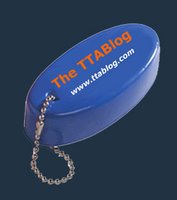TTABlog Test: Is KID CHRISTIAN for Sweatshirts Confusable with CHRISTIAN for Wrestling Entertainment Services?
The USPTO refused to register the mark KID CHRISTIAN for "Hats; Shirts; Sweatshirts; Bandanas; Hooded sweatshirts," for entertainment services in the nature of wrestling contests, and for the provision of wrestling news and information. The Office found confusion likely with the registered mark CHRISTIAN for, "entertainment services, namely, wrestling exhibitions and performances by professional wrestlers and entertainers; providing wrestling news and information via a global computer network," The marks are certainly close and the services overlap, but what about applicant's clothing items? How do you think this appeal came out? In re Christian Michael Montemurro-Navarro, Serial No. 97407965 (September 13, 2024) [not precedential] (Opinion by Judge Cindy B. Greenbaum).
Applicant claimed that the cited mark is weak due to a "crowded field," relying on a single registration for the mark CHRISTIAN CAGE for wrestling services and merchandise. The Board was not impressed. There was no evidence of use of that mark, and in any event a single third-party registration "does not support a finding that the term CHRISTIAN is weak or diluted for wrestling-related goods and services." There was also no evidence that the mark CHRISTIAN is descriptive of the involved goods and services, and so the Board concluded that the cited mark is entitled to a "normal scope of protection."
As to the marks, although the first word of a mark may be dominant, "here the word KID is a short, mono-syllabic word that does little to visually distinguish the marks. Rather, the additional word KID modifies and thereby highlights the second word, CHRISTIAN, rendering CHRISTIAN dominant regardless of its placement." Moreover, "[c]onsumers familiar with the cited CHRISTIAN mark are likely to perceive KID CHRISTIAN as a diminutive version or extension of that brand, potentially a nickname or reference to a child or younger sibling within the same wrestling 'family.'"
The Board concluded that the marks are similar in appearance, sound, connotation and commercial impression due to the shared term CHRISTIAN, and so the first DuPont factor weighed in favor of a finding of likely confusion."
Turning to the goods and services, because the involved services are in part identical, the Board must presume that the channels of trade and classes of purchasers are the same for those legally identical services. As to applicant's class 25 goods, Examining Attorney Bria Stephens submitted Internet evidence "showing that these goods are commonly offered by the same sources as entertainment services in the nature of wrestling exhibitions and performances by professional wrestlers and providing wrestling news and information via a global computer network."
The evidence submitted demonstrates that multiple parties offer the wrestling-related services identified in the cited registration under the same mark as various clothing items identified in the Application. Examples include: WWE’s wrestling exhibitions, news and WWE logo-branded hats, NWA’s wrestling exhibitions, news and NWA-branded hooded sweatshirts, and Impact Wrestling’s wrestling exhibitions, news and Impact Wrestling-branded t-shirts.
Applicant’s goods are marketed to the general population, which includes persons interested in wrestling entertainment, news and information. Furthermore, applicant’s clothing items "are commonly offered by the same source, under the same mark, and often on the same website, as wrestling entertainment, news and information services." In sum, the channels of trade and classes of consumers for applicant’s Class 25 goods overlap with those of registrant's Class 41 services.
And so, the Board affirmed the refusal to register.Read comments and post your comment here.
TTABlogger comment: Wrestle with this: is everything related to clothing?
Text Copyright John L. Welch 2024.

























